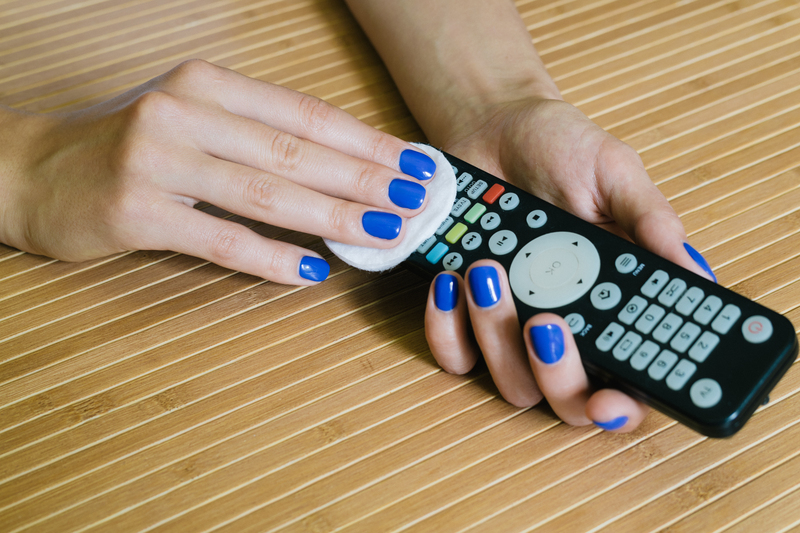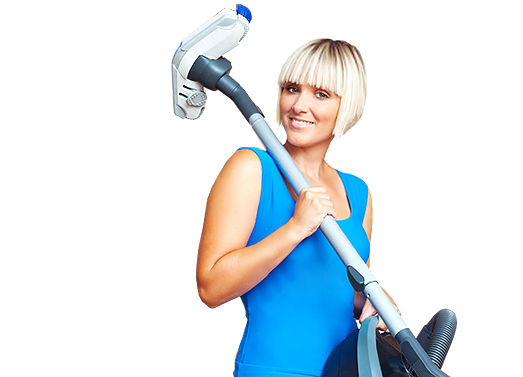Master the Art of Cleaning uPVC Window Frames
Posted on 08/06/2025
Master the Art of Cleaning uPVC Window Frames: The Ultimate Guide
Is your once sparkling white uPVC window frame now looking dull and tired? You're not alone! Although uPVC windows are renowned for their low maintenance, they're not entirely "set and forget." With the right cleaning method and a touch of care, you can keep your uPVC frames looking pristine for years to come. In this comprehensive guide, you'll learn the expert techniques and insider tips to master the art of cleaning uPVC window frames--ensuring your home maintains that fresh, spotless look that impresses everyone.

Why Is It Important to Clean uPVC Window Frames?
uPVC (unplasticised polyvinyl chloride) window frames have become the dominant choice in modern homes due to their durability, energy efficiency, and elegant appearance. However, environmental factors such as dust, pollution, acid rain, and bird droppings can gradually stain and degrade your uPVC frames. Regular cleaning helps:
- Preserve the aesthetic appeal of your uPVC windows
- Increase the lifespan of the frames
- Prevent stubborn stains and grime from accumulating
- Enhance indoor air quality by minimizing mould and dirt build-up
Understanding the Nature of uPVC Window Frames
uPVC is strong, weather-resistant, and naturally resistant to rot and corrosion. Unlike wood, it won't warp or require constant repainting. However, exposure to outdoor elements means even the best uPVC window frames can accumulate dirt and lose their lustre if neglected.
What Makes uPVC Window Frame Cleaning Unique?
Cleaning uPVC windows differs from maintaining traditional wood or metal windows. Using harsh chemicals or abrasive tools can damage the finish, leaving scratches and discolouration. Instead, specialized cleaning solutions and gentle techniques maximize the shine and longevity of your investment.
Common Types of Stains & Dirt on uPVC Windows
- Surface dust and pollen
- Bird droppings or insects
- Mould and mildew, especially in damp climates
- Watermarks and mineral scale from rain
- Sticky marks from stickers or adhesive residue
Essential Tools & Supplies for Cleaning uPVC Window Frames
Before starting, make sure you're equipped with the proper tools. These will ensure an effective, thorough, and damage-free clean:
- Soft microfiber cloths
- Sponge or non-abrasive pad
- Bowl or bucket of warm water
- pH-neutral detergent or mild washing-up liquid
- Old toothbrush (perfect for corners and joints)
- White vinegar (for tougher stains)
- Baking soda (for gentle stain removal)
- Vacuum cleaner with brush attachment (for loose dirt)
- Spray bottle (optional for solution mixing)
- Rubber gloves (to protect your hands)
The Step-by-Step Guide to Cleaning uPVC Window Frames
Step 1: Preparing the Area
Start by opening your window wide. Lay a towel or drop cloth beneath to catch drips or dirt. Remove any ornaments, blinds, or curtains that might get in the way or collect droplets.
Step 2: Dry Dusting
Use a vacuum cleaner's brush attachment or a dry microfiber cloth to remove dry dust, cobwebs, and loose debris from the uPVC frame and sills--inside and out. Don't forget the corners, where dirt tends to build up.
Step 3: Wiping with a Mild Solution
- Prepare a cleaning solution by mixing a few drops of pH-neutral detergent (like regular dishwashing liquid) in warm water.
- Dip a soft cloth or non-abrasive sponge into the solution. Wring out excess liquid to prevent drips.
- Gently wipe all accessible parts of the uPVC window frames, paying extra attention to stained or sticky spots.
Step 4: Treating Tough Stains & Marks
For stubborn marks or ingrained stains, you can use:
- Baking soda paste: Mix a little baking soda with water to form a paste. Apply gently with a soft cloth, then rinse away residue.
- White vinegar: Spray onto stains, let it sit for a few minutes, then wipe away. Vinegar cuts through grime and sanitizes, but avoid long contact on rubber seals as it may cause deterioration over time.
- Toothbrush: Scrub gently in corners, edges, and around hardware or handles, where fingers often leave grease.
Step 5: Rinse and Dry
Using a separate cloth and clean water, rinse off all cleaning residues to avoid leaving streaks or soap marks. Dry thoroughly with a dry microfiber cloth to achieve that spotless shine.
Step 6: Cleaning uPVC Window Seals & Rubber Gaskets
- Carefully wipe rubber seals with a damp cloth--avoid harsh chemicals or rough scrubbing that can erode the flexibility and effectiveness of the gasket.
- For stubborn dirt, use diluted washing-up liquid only.
- Dry with a soft cloth; never leave the seals wet, as lingering moisture can encourage mould growth.
Step 7: Cleaning uPVC Window Hinges & Tracks
- Use a vacuum to suck away debris in the hinges and tracks.
- Wipe down with a damp cloth and a drop of mild detergent.
- If needed, lubricate moving parts with a silicone spray (not oil-based lubricant as it attracts dust and dirt).
Pro Tips: How to Keep uPVC Window Frames Cleaner for Longer
- Clean your uPVC window frames every 3-6 months. In dusty or coastal locations, consider cleaning more frequently to combat salt and airborne particles.
- Act quickly on spills and marks--the sooner a dirt spot is wiped, the easier it is to remove.
- Never use abrasive cleaners, wire wool, or harsh solvent-based products--these can irreparably scratch and discolour uPVC surfaces.
- Wash windows on a cloudy day to prevent hot sun from drying soapy water quickly and leaving streaks.
- For high or hard-to-reach windows, use an extendable cleaning tool or consider professional cleaning services for safety.
What to Avoid: Common Mistakes When Cleaning uPVC Frames
A few wrong moves can damage your lovely uPVC frames. Always avoid the following errors:
- Using scouring pads or abrasive sponges--these leave ugly scratches.
- Applying bleach, ammonia, acetone, or solvent-based cleaners--they can turn white uPVC frames yellow over time and weaken the structure.
- Using high-pressure washers--the force can damage seals and drive water into the window mechanism, leading to damp issues.
- Leaving moisture behind--always dry frames fully to prevent mould growth.
How to Clean Yellowed uPVC Window Frames
Over time, white uPVC may develop yellow tinges due to pollution, cooking grease, UV exposure, or cigarette smoke. While prevention is easier than cure, some improvement is possible:
- Try a specialized uPVC cleaner: These are formulated to gently restore whiteor pale frames without harsh chemicals. Always spot-test in an inconspicuous area first.
- Baking soda or white vinegar: As described earlier, these household items can help remove surface stains through gentle, repeated cleaning.
- The magic eraser approach: Melamine foam pads (like "Magic Eraser") can sometimes remove stubborn discoloration--always use a gentle touch.
- Professional restoration: For deeply yellowed, stained, or faded frames, a specialist cleaning or restoration company may be able to resurface and treat your uPVC for a near-new look.
Natural & Eco-Friendly Cleaning Solutions for uPVC Frames
Want to keep your home clean and environmentally friendly? Luckily, the best methods for cleaning uPVC window frames often use household ingredients that are safe for both your family and the planet:
- Baking soda and water paste: Great for stains and residue.
- White vinegar diluted with water: Effective for shine and odour removal.
- Lemon juice: Can be used for a fresh scent and mild bleaching on very light stains.
Avoid adding harsh chemicals to your cleaning arsenal--uPVC's durability means gentle is just as effective.

Frequently Asked Questions on Cleaning uPVC Window Frames
How often should I clean uPVC window frames?
For the best results, clean uPVC frames every 3-6 months. In areas with heavy pollution or coastal exposure, monthly cleaning may be preferable.
Can I use bleach or cream cleaners on uPVC?
No. Bleach and abrasive cream cleaners can discolour, scratch, and even damage the uPVC surface. Always opt for pH-neutral and non-abrasive products.
How do I remove mould from uPVC window seals?
Mix a solution of water and mild detergent. Wipe gently with a soft cloth--avoid soaking the seal. If the mould persists, a little white vinegar can be used, followed by thorough drying.
What's the right way to clean uPVC window locks and mechanisms?
Use a soft brush or vacuum to remove loose dirt, then wipe with a cloth dampened with mild detergent. Lubricate moving parts with a silicone-based lubricant, never oil-based.
Will professional cleaning services make a difference?
Absolutely! For stubborn stains, extensive grime, or awkwardly located windows, professional window cleaning companies have the right tools, cleaning agents, and expertise to restore your uPVC window frames to their former glory.
Conclusion: Achieve Sparkling uPVC Frames with the Right Techniques
Mastering the art of cleaning uPVC window frames is simpler than you might think. By using gentle cleaning solutions, the right tools, and a regular cleaning routine, you can keep your uPVC windows looking immaculate for decades. Always remember: avoid harsh chemicals and abrasives, act quickly on stains, and embrace eco-friendly cleaning options wherever possible.
Want your home to shine? Adopt these expert tips, and your uPVC window frames will stay as bright and welcoming as the day they were installed.
- Start your cleaning routine today for sparkling, like-new uPVC windows!
- Have additional tips or questions about maintaining your uPVC window frames? Share them in the comments below and join the conversation!




